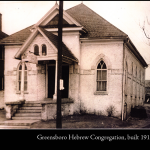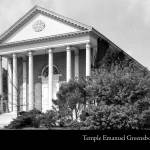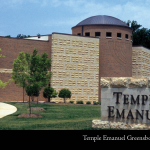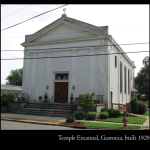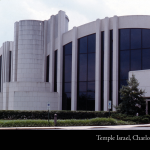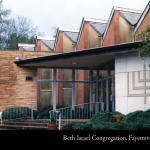|
The main denominations of Judaism share a core identity as Jews but practice the faith and observe the traditions differently. What goes on during a Jewish worship service and what does it mean? The video to your right gives you a glimpse inside a Sabbath service, held in 2009 at Raleigh’s Beth Or. While each denomination brings its own perspective to Jewish life and worship (see denomination descriptions below), the groups share most ritual elements in common. “Play by play” commentary is delivered in “A Faith in Motion” by: 1) Rabbi Lucy Dinner of Temple Beth Or, a Reform synagogue in Raleigh; 2) Rabbi Eliezer Havivi; of Beth David, a Conservative synagogue in Greensboro; and 3) Rabbi Aaron Herman of Chabad of Cary Learning Center, an Orthodox congregation in Cary. Orthodox Jews are traditionalists who believe that the Torah was divinely revealed at Mount Sinai. They live according to biblical commandments as interpreted by rabbis in the Talmud, volumes of law and commentary that date to ancient Jerusalem and Babylonia. Orthodox Jews pray in Hebrew three times daily, observe Sabbath strictly, and follow kosher dietary laws. They believe that men and women have different spiritual obligations; indeed, the two sexes worship separately in the synagogue. From the 1880s to the 1920s Eastern European immigrants founded seventeen Orthodox synagogues in North Carolina. Conservative Jews interpret Jewish law more liberally than the Orthodox. They still accept the supreme authority of divine law, but they recognize that traditional worship practices have changed over time. The movement, which arose a century ago in America, grants greater equality to women, allows prayer in English as well as in Hebrew, and sometimes incorporates musical instruments in worship services. By the 1960s virtually all of the state’s Orthodox congregations had changed into Conservative ones. (Orthodox synagogues began to re-emerge in the 1980s.) Reform Jews place less emphasis on obedience to Jewish law and on the authority of the rabbis than on Judaism’s ethical and universal values as voiced by the prophets. The Reform movement, which dates back to nineteenth-century Europe and America, created worship services that use both English and Hebrew, gave equal status to women (including shared family pews), and brought organs into its temples. The number of Reform congregations in North Carolina has grown from one in 1876 to nearly twenty today.
|
|
|
|







